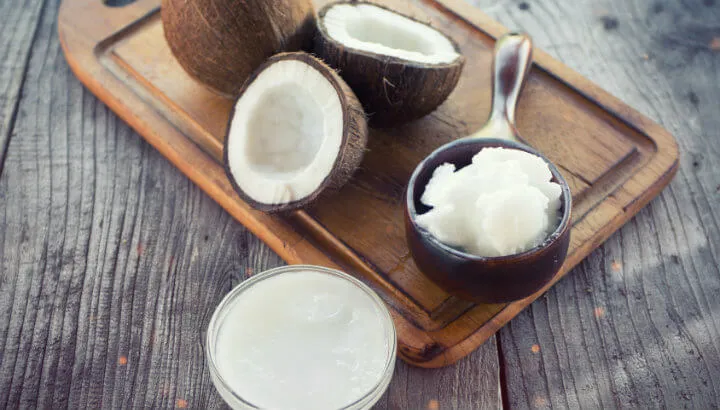
- Share on Facebook51
- Share on Pinterest
- Share on Twitter
The mystic wonders of coconut oil are vast and plenty. Here at The Alternative Daily, we love it for everything from its ability to boost the body’s metabolism and help ward off early signs of Alzheimer’s — and we’re not the only ones.
In 2017 alone, the U.S. domestic consumption of coconut oil amounted to 402,000 metric tons! We cook with it, feed it to our pets, slather it onto our face and bodies, the list goes on and on. If you’re making the shift towards a more natural beauty routine, you’ve probably got coconut oil on that list.
With all of the dangers found in chemical-laden beauty products, it’s no wonder a product like sunscreen might have some questioning what exactly we’re putting on our bodies (and our children’s bodies) all in the name of protection.
For some, coconut oil might seem like the next-best alternative. It’s rich in antioxidants that help to reduce inflammation and pump moisture back into your skin, so couldn’t it be used to ward off the sun’s harmful rays? Well, yes and no.

Sunscreens are the best option for protection
According to the Skin Cancer Foundation, sunscreens are products that help prevent the sun’s UV (ultraviolet) radiation from reaching the skin. There are two types of UV rays, UVA and UVB, both of which serve different roles in causing sunburns, wrinkling, premature signs of aging and cancers. UVA rays are known to penetrate deep into the skin and cause the lasting effects of light-induced aging, while UVB rays are responsible for the red, painful sunburns one usually associates with too much time spent outside sans protection.

SPF is important
When determining a sunscreen’s SPF (Sun Protection Factor), it is calculated by the product’s ability to prevent UVB-related damage (a sunburn). For example, SPF 15 would protect against UVB rays 15 times longer than being without sunscreen. The higher the SPF, the longer (and greater) one’s chances are to ward off UV rays. Although, regardless of SPF level, it is always recommended that sunscreen be reapplied every two hours.
Coconut oil has a low SPF
Unfortunately, coconut oil (as well as other plant oils) has a relatively low protection level. In fact, coconut oil is listed as having an SPF level of 4. This translates to just four-times the protection compared to choosing to forgo sunscreen altogether.

Think of it this way: if it takes 20 minutes for the sun’s UVB rays to burn the skin, then using coconut oil will only protect for a mere 80 minutes. Additionally, a study from 2016 examined the ability for plant oils (coconut oil, canola oil, citronella oil, olive oil, among others) to block UVB rays and found that they did virtually nothing, making their true SPF level much closer to 1. This is one instance where a store-bought sunscreen is a much better option.
Thankfully, the Environmental Working Group has an entire page dedicated to products that are non-toxic and offer coverage from both UVA and UVB rays.
How to use coconut oil for your skin
However, all hope is not lost for coconut oil lovers. While not a good substitute for sunscreen, it can be very beneficial when used after time spent in the sun. The high-concentration of healthy fats found in coconut oil can be particularly helpful in alleviating sunburn-related symptoms including swelling, itching and peeling. Coconut oil also boasts a compound called lauric acid, a “healthy” saturated fat rich in antibacterial properties that may help ward off infections.
It is recommended that, when using coconut oil to soothe a sunburn, a cold compress be applied to the affected area first. This will help to cool the burn, lower the body’s temperature and minimize initial swelling. Alternatively, one can also stand under a cold shower for 15 minutes to yield the same results.
After the skin has been dried, mix together the following ingredients and apply directly to the skin. You may want to consider making extra and storing it in a sealed glass jar for future use.
Soothing sunburn relief with coconut oil

Ingredients:
- ⅛ cup virgin coconut oil
- Few drops of essential oil (peppermint and lavender work well to calm burned skin)
- ½ teaspoon vitamin E oil (optional)
Instructions:
- Mix all ingredients together in a small bowl or jar.
- If coconut oil is solid at room temperature, simply mash with a fork or leave out in the sun for a few minutes until it melts.
- Apply liberally to the affected area, taking care to avoid the eyes and mouth.
- Massage into skin and allow the rest to absorb naturally.
- Take caution when wearing certain items of clothing, 100-percent cotton works best here to prevent ruining fabrics such as silk or polyester.
- Store the remaining solution in a sealed jar.
Learn More: Free book reveals why coconut oil is ‘Mother Nature’s’ #1 healing superfood! =>
— Megan Harris
- Share on Facebook51
- Share on Pinterest
- Share on Twitter

